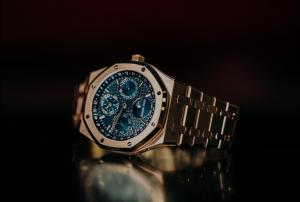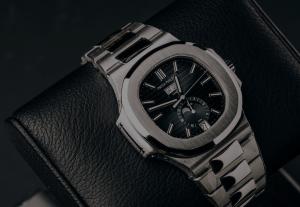Icons of Time: Celebrating the Legacy of Rolex, Patek Philippe, and Audemars Piguet

The Rolex Submariner—an enduring symbol of precision, durability, and prestige that cements Rolex’s place among the icons of watchmaking history.
A new report explores how three of the world’s most prestigious brands continue to define excellence in horology, with insights from Avi-Meir Zaslavsky.
According to Avi-Meir Zaslavsky, founder of 999Watches, their enduring influence is no accident.
“These brands did not just build watches—they built empires of trust, excellence, and timeless design,” said Zaslavsky. “Owning a Rolex, a Patek, or an Audemars Piguet is not simply about telling time. It’s about carrying history and heritage on your wrist.”
Founded in 1905, Rolex remains one of the most recognizable luxury brands in the world. Its reputation is built on durability, precision, and universal appeal. From the Submariner, beloved by divers, to the Day-Date, often called the “President’s Watch,” Rolex has become a global symbol of success.
Rolex pioneered several innovations, including the first waterproof wristwatch, the Oyster, in 1926, and the Perpetual rotor self-winding mechanism in 1931. These practical breakthroughs cemented Rolex’s position as the go-to brand for explorers, professionals, and style leaders alike.
“Rolex represents reliability and status in one package,” Zaslavsky explained. “It’s the watch you can wear to scale Everest or walk into a boardroom—it always delivers the right impression.”
Despite producing watches in larger quantities than its peers, Rolex has managed to maintain an aura of exclusivity. Strong resale values and waiting lists at authorized dealers underscore its unmatched demand.
Founded in Geneva in 1839, Patek Philippe is revered as the custodian of classical watchmaking. Known for exquisite craftsmanship and highly complicated mechanisms, Patek Philippe has produced some of the world’s most valuable timepieces.
The brand’s slogan, “You never actually own a Patek Philippe, you merely look after it for the next generation,” reflects its commitment to longevity and family heritage. Models like the Calatrava and the Nautilus embody both refinement and versatility.
In 2019, a Patek Philippe Grandmaster Chime Ref. 6300A-010 sold at auction for $31 million, setting a world record. Such figures highlight its status as a brand where artistry meets investment.
“Patek Philippe is where watchmaking meets eternity,” said Zaslavsky. “Collectors know that these watches don’t just retain value—they often become more precious with each passing decade.”
The maison’s mastery of grand complications—such as perpetual calendars, minute repeaters, and split-second chronographs—continues to inspire reverence among connoisseurs.
Founded in 1875 in Le Brassus, Switzerland, Audemars Piguet carved its legacy by daring to be different. While rooted in tradition, it is best known for bold design choices that reshaped modern watchmaking.
The launch of the Royal Oak in 1972 redefined luxury watches. Designed by Gérald Genta, its octagonal bezel and integrated bracelet challenged the norms of the time. Initially controversial, the Royal Oak became a sensation and established a new category: the luxury sports watch.
“Audemars Piguet taught the industry that risk can pay off,” Zaslavsky observed. “The Royal Oak was radical in its day, but today it’s one of the most sought-after designs in horology.”
Unlike Rolex and Patek Philippe, Audemars Piguet remains family-owned, which many enthusiasts say contributes to its spirit of independence. Its balance between avant-garde design and high complications gives it a unique standing in the industry.
While each brand has its distinct DNA, their impact converges on one point: they embody watchmaking excellence and cultural prestige. Rolex is known for its robust engineering, Patek Philippe for its artisanal mastery, and Audemars Piguet for its fearless innovation.
Together, they dominate the auction market and collector conversations, often setting benchmarks for both value and desirability.
“When people think of the holy trinity of watches, these names always come up,” Zaslavsky explained. “They represent three different philosophies, but all lead to one outcome: timeless greatness.”
In an age of smartphones, watches no longer serve a purely functional role. Instead, they symbolize identity, achievement, and taste. For many, wearing one of these brands is a personal statement as much as a practical choice.
Collectors often treat these timepieces as investments, but equally as heirlooms. Whether handed down through generations or purchased as milestones of success, they carry emotional as well as financial significance.
“A Rolex, a Patek Philippe, or an Audemars Piguet tells the world something about who you are,” Zaslavsky emphasized. “That’s why these brands have outlasted trends—they connect deeply with both history and personal identity.”
As the watch industry evolves, these maisons continue to adapt. Sustainability initiatives, new materials, and digital engagement ensure relevance with younger generations. Yet, at their core, Rolex, Patek Philippe, and Audemars Piguet remain faithful to tradition.
Industry analysts predict that their influence will only grow, as demand for mechanical watches persists despite advances in wearable technology. Their combination of rarity, craftsmanship, and cultural significance secures their place as the icons of time.
Avi-Meir Zaslavsky
999Watches
info@999Watches.com
Visit us on social media:
LinkedIn
Instagram
Facebook
X
Legal Disclaimer:
EIN Presswire provides this news content "as is" without warranty of any kind. We do not accept any responsibility or liability for the accuracy, content, images, videos, licenses, completeness, legality, or reliability of the information contained in this article. If you have any complaints or copyright issues related to this article, kindly contact the author above.


